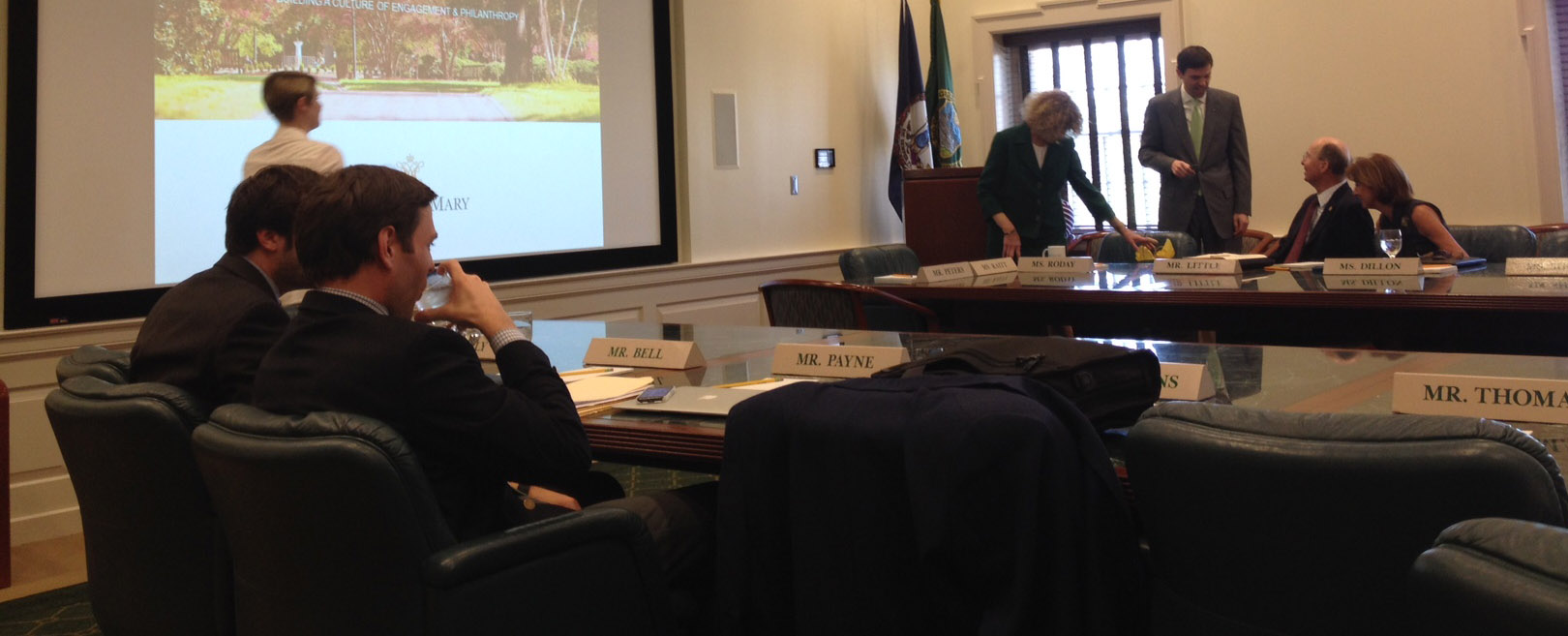The Board of Visitors’ Committee on Academic Affairs convened Thursday morning at the College of William and Mary to discuss a proposed Master of Science program in Business Analytics.
Dean of the Mason School of Business Larry Pulley presented the proposed program to the Board, and members voted to approve the proposal. According to Pulley’s presentation, the program would begin accepting applicants in January 2016 and would officially begin in July 2016.
“There is a huge and growing market out there [for big data analysts],” Pulley said. “It will only get larger.”
In designing the 30-credit, one-year program, Pulley and his team spoke with other schools with similar programs — the University of Texas, North Carolina State University and Northwestern University — to gauge other business programs’ strengths and best practices. Pulley also discussed surveying current students at the College about whether they would take advantage of such a program and said he was pleased with the results.
Pulley mentioned that one potential benefit for students is the opportunity for them to earn both an undergraduate degree and a Master’s degree in Business Analytics from the College in a four-year period.
“Our students come in with so many AP credits,” Pulley said. “It would be easy for many of them to graduate early. Most of them don’t because they want to graduate with their cohort, but this offers you the opportunity to graduate with your cohort with not one, but two degrees from William and Mary.”
Following questions from committee members, the committee approved the proposed program, which will be presented to the full board Friday. The program must also go to the state for approval.
After the vote, Provost Michael Halleran announced that Interim Associate Provost for Enrollment and Dean of Admission Tim Wolfe ’95 M.Ed. ’01 will permanently take over the position, which current Vice President for Strategic Initiatives Henry Broaddus held until June 2014.
Wolfe spoke briefly about the Admissions Office’s ongoing work, as accepted students’ decision day — May 1 — approaches.
“To give you a bit of a historical perspective, traditionally between 50 and 60 percent of our regular decision deposits come in after April 21,” Wolfe said. “So just as everyone waits to apply until December 31 and January 1, we’re still very much in that situation where we’re waiting to see what happens.”
Wolfe mentioned that the applicant pool saw a growth of approximately 3 percent from last year.
Before the committee entered executive session, Faculty Assembly liaison and associate professor of law Eric Chason offered an update on the Faculty Assembly’s activities. He said the assembly is working to increase faculty giving, with a goal of a 50 percent giving rate among faculty members. The assembly is also focused on retirement incentives and transition and is working to develop recommendations regarding faculty retirement. Those recommendations will likely be presented to the board next year.

